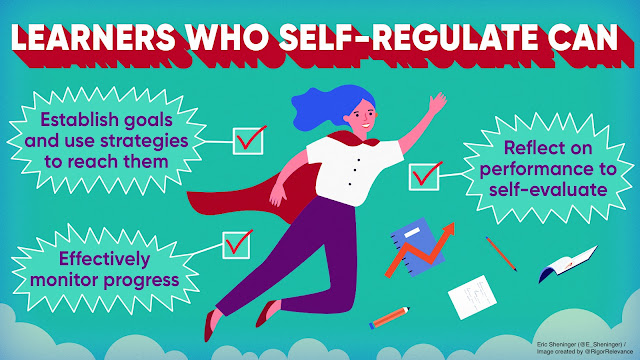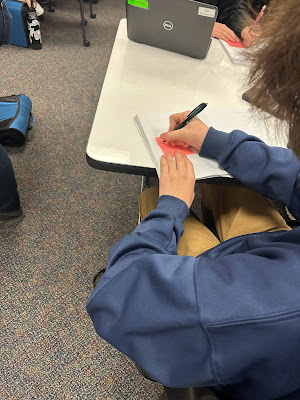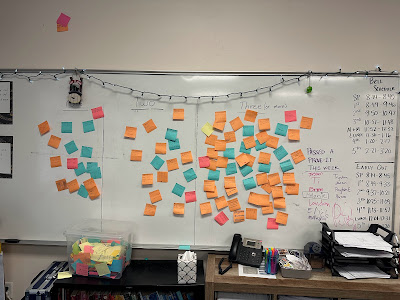One of the best and most gratifying aspects of my job is getting into classrooms and providing feedback to leaders, who, in turn, help their teachers grow. Most of my blog ideas materialize during these times of bliss. Without this practical lens, I don’t think I would be able to write anything of value. Over the years, the state of Utah has provided me with a plethora of opportunities to work with schools on Personalized Competency-Based Learning (PCBL). Not only is this area of focus dear to my heart, but there are always various nuances that can be explored in greater detail.
I am always fascinated by how high-agency strategies can unlock the potential of learners. In particular, I see a clear connection to how path and pace can promote self-regulation, a competency that is important for students in school and all of us in our professional lives. Research provides a sound rationale for its importance and impact on learners. An article by Y. B. Chung and Mantak Yuen (2011) in the Journal of Invitational Theory and Practice states the following:
In the context of schools, self-regulation is evident not only when students control their own behavior in and out of the classroom (self-discipline or self-control) but also when, during lessons, they are able to set their own goals, plan appropriate strategies for achieving these goals, monitor, evaluate and adapt their own actions, and control their effective use of available learning time and resources (Ormrod, 2010). A large body of empirical evidence suggests that self-regulated learners are more effective, confident, resourceful, and persistent in learning (Pintrich, 1995; Schunk & Zimmerman, 1994; Winne & Hadwin, 1998; Zimmerman & Campillo, 2003).
With the right conditions in place, learners who effectively self-regulate can:
- Establish goals and applicable strategies to accomplish them
- Effectively monitor progress
- Reflect on performance to self-evaluate
A recent coaching cycle at Quest Academy Junior High School unearthed numerous instances where teachers had integrated personalized strategies to promote self-regulation. In Shawn Berry’s 8th-grade math class, I observed students writing down individual learning goals for the lesson based on unpacked standards in the form of learning targets. Once done, they added each of these to a whiteboard. After reflecting on this, I reached out to principal Nicki Slaugh and asked if she could get some more details from Shawn. Here is what she provided:
In a self-paced classroom, it's essential to help students manage their time. I noticed my eighth graders were struggling to stay focused and on target in our self-paced math program. I got the idea for them to create a specific to-do list for the 57 minutes they are in the classroom. The first 5 minutes are for a spiral review or math talk question and we need 1 minute at the end for closure. That left 51 minutes to organize, so I decided to divide that into 17-minute sections.
Each student creates a to-do list based on three sets of 17 minutes. I use a timer on the TV that visually counts down and has an alarm. In the beginning, we discussed how to make sure the tasks they chose for their lists were reasonable to finish in 17 minutes. Some students were choosing tasks that were too short or too long. At the end of class, the students add their post-it to our chart on the class whiteboard to show how many of their tasks they finished.
Since starting this, more students have felt success during class and are able to stay on task. Some students have realized future tasks are dependent on the outcome of their first task, so they either make a plan A and plan B list or complete their to-do list after completing their first task. I love seeing 13- and 14-year-olds learn how to manage their time using short-term deadlines. The academic deadlines for their course are sometimes hard to conceptualize because they take weeks to accomplish. This is a skill they will definitely need in their future!
Self-regulation is a hallmark of personalized learning. Students are more prone to own their learning as they are taking proactive steps to identify where they are, where they want to be, and what is needed to succeed. In life, this might be the most critical competency that educators can cultivate in the classroom.
Ormrod, J. E. (2010). Educational psychology: developing learners (7th ed.). Upper Saddle River, NJ: Pearson-Prentice Hall.
Pintrich, P. R. (1995). Understanding self-regulated learning. San Francisco, CA, Jossey-Bass.
Schunk, D. H., & Zimmerman, B. J. (1994). Self-regulation of learning and performance: Issues and educational applications. Hillsdale, NJ: Erlbaum.
Winne, P. H., & Hadwin, A. F. (1998). Studying as self-regulated learning. In D. J. Hacker, J. Dunlosky, & A. C. Graesser (Eds.) Metacognition in educational theory and practice (pp. 279-306). Hillsdale, NJ: Erlbaum.
Zimmerman, B. J., & Campillo, M. (2003). Motivating self-regulated problem solvers. In J. E. Davidson & R. J. Sternberg (Eds.) The nature of problem solving (pp. 239), New York: Cambridge University Press.






